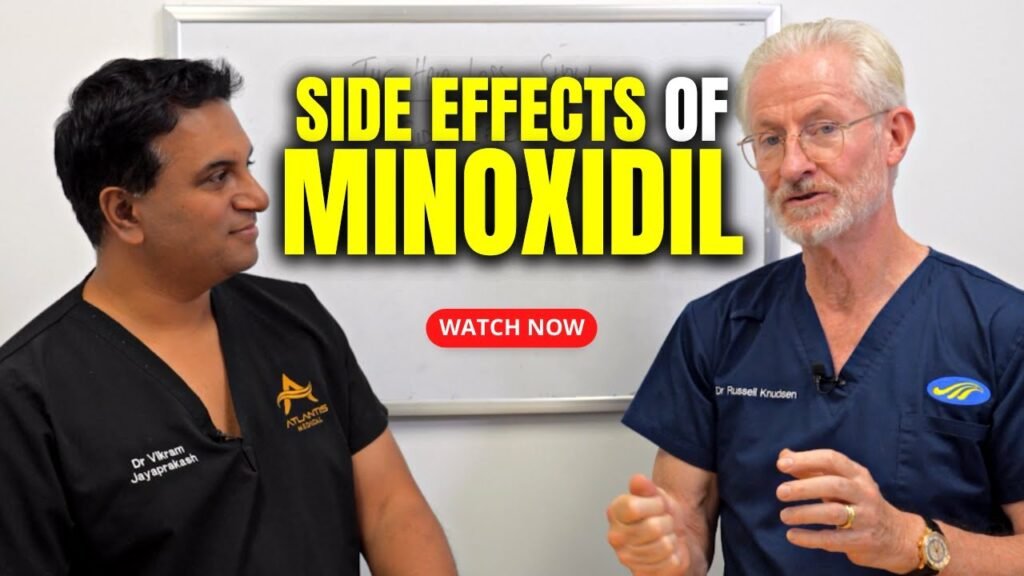Understanding Minoxidil: What It Is and How It Works
Minoxidil is a widely recognized topical treatment for hair loss, commonly known under the brand name Rogaine. Originally developed as an oral medication for high blood pressure, researchers discovered that minoxidil had an intriguing side effect: it stimulated hair growth. This serendipitous discovery led to the development of minoxidil as a topical treatment specifically targeting hair loss, particularly androgenetic alopecia, which is the most common form of hair loss in both men and women.
How Minoxidil Works
Minoxidil works by prolonging the anagen phase, which is the active growth phase of hair follicles. By doing so, it not only stimulates dormant hair follicles to enter the growth phase but also extends the period during which hair grows. The exact mechanism of how minoxidil promotes hair growth is not fully understood, but it is believed to enhance blood flow to the hair follicles. This increased circulation may deliver more oxygen and nutrients, thus revitalizing and enlarging shrunken hair follicles.
Application and Usage
For optimal results, minoxidil should be applied directly to the scalp in the areas where hair thinning is most noticeable. It is typically available in liquid or foam formulations, with concentrations of 2% for women and both 2% and 5% for men. Consistent application is crucial, as discontinuing use may result in the resumption of hair loss. Users often begin to see visible results after about 3 to 6 months of regular use, although individual responses can vary. As with any treatment, its essential to follow the instructions carefully and consult with a healthcare provider to ensure its suitable for your specific condition.
Common Side Effects of Minoxidil in Males
Minoxidil, a popular over-the-counter treatment for hair loss, is widely used by men seeking to combat thinning hair and stimulate regrowth. However, like any medication, it can come with a range of side effects. Understanding these potential reactions is crucial for anyone considering or currently using minoxidil.
Scalp Irritation
One of the most frequently reported side effects of minoxidil in males is scalp irritation. This can manifest as itching, redness, or a burning sensation in the area where the product is applied. Such irritation is typically mild and may subside as the scalp becomes accustomed to the treatment. However, if the irritation persists or worsens, it is advisable to consult a healthcare professional.
Unwanted Facial Hair Growth
Another side effect some men may experience is the unintended growth of hair in areas other than the scalp, particularly on the face. This is often due to the medication spreading beyond the intended application area or systemic absorption. To minimize this risk, its important to apply minoxidil precisely and wash hands thoroughly after use. If facial hair growth becomes bothersome, seeking medical advice is recommended.
Changes in Hair Texture
Men using minoxidil may notice changes in their hair texture, such as increased dryness or coarseness. This change can occur as new hair begins to grow and may differ from the existing hair. While not harmful, it may require adjustments in hair care routines, such as using moisturizing shampoos or conditioners to manage the altered texture.
Common Side Effects of Minoxidil in Females
Minoxidil, a popular topical treatment for hair loss, is widely used by females to stimulate hair growth and combat thinning hair. However, like many medications, it can come with a range of side effects. Understanding these potential side effects is crucial for anyone considering or currently using minoxidil.
Scalp Irritation
One of the most frequently reported side effects of minoxidil in females is scalp irritation. This can manifest as itching, redness, or dryness on the area where the product is applied. Some users may also experience flaking or dandruff-like symptoms. To mitigate these effects, it is advisable to use a gentle shampoo and avoid applying the product to broken or irritated skin.
Unwanted Facial Hair Growth
Another side effect that some females may encounter is the growth of unwanted facial hair. This occurs when minoxidil inadvertently spreads to areas beyond the scalp during application. To reduce the risk of this side effect, it is important to apply the product carefully and wash hands thoroughly after each use. If facial hair growth becomes a concern, consulting with a healthcare provider for advice on how to manage or prevent this issue is recommended.
Changes in Hair Texture and Color
Females using minoxidil may also notice changes in their hair texture or color. Some users report that their hair becomes drier, coarser, or appears slightly darker. While these changes are typically temporary, they can be concerning for those who are unprepared. Regular conditioning treatments and avoiding excessive heat styling can help manage these changes while continuing the use of minoxidil.
Managing and Mitigating Minoxidil Side Effects
When using minoxidil for hair regrowth, it is crucial to understand how to manage and mitigate potential side effects effectively. One common side effect is scalp irritation, which can be minimized by ensuring the product is applied correctly. To avoid irritation, users should apply minoxidil to a clean, dry scalp and follow the recommended dosage. Its essential to wash hands thoroughly after application to prevent accidental transfer to other areas, which could also lead to unwanted hair growth.
Monitoring for Allergic Reactions
An essential aspect of managing minoxidil side effects is monitoring for allergic reactions. Some individuals may experience itching, redness, or a rash. If these symptoms occur, its advisable to discontinue use immediately and consult with a healthcare professional. To prevent severe allergic reactions, consider performing a patch test before full application. This involves applying a small amount of minoxidil to a discreet area of the skin and observing for any adverse reactions over 24 hours.
Adjusting the Dosage
Another strategy for mitigating side effects is adjusting the dosage. Sometimes, side effects such as dizziness or unwanted hair growth in non-target areas can be attributed to using too much of the product. Users should adhere strictly to the recommended dosage on the product label. If side effects persist, consulting a healthcare provider for a possible dosage adjustment can be beneficial. Additionally, exploring alternative formulations, such as lower concentration solutions, might reduce adverse effects while still providing hair regrowth benefits.
Is Minoxidil Safe? A Comprehensive Look at Its Risks and Benefits
When considering the use of minoxidil for hair regrowth, understanding its safety profile is crucial. Minoxidil, commonly marketed under brand names like Rogaine, is a popular over-the-counter treatment for hair loss in both men and women. It works by stimulating hair follicles and increasing blood flow to the scalp, promoting hair growth. However, like any medication, it comes with its own set of potential risks and benefits that users should be aware of.
Potential Benefits of Minoxidil
The primary benefit of minoxidil is its effectiveness in promoting hair regrowth. Many users report noticeable improvements in hair density and thickness after consistent use over several months. Minoxidil is particularly beneficial for individuals experiencing androgenetic alopecia, also known as male or female pattern baldness. It is one of the few FDA-approved treatments for this condition, making it a trusted choice for those looking to combat hair loss. Furthermore, it is easy to apply, with topical solutions and foam formulations available, providing flexibility in usage based on personal preference.
Risks and Side Effects
Despite its benefits, minoxidil does come with potential side effects that users should consider. Common side effects include scalp irritation, dryness, and itching, which can usually be managed with proper scalp care. In rare cases, users may experience more serious side effects such as unwanted facial hair growth, dizziness, or rapid heartbeat. Its important to use minoxidil as directed and consult with a healthcare provider if any adverse reactions occur. Additionally, minoxidil is not recommended for individuals with certain medical conditions or for pregnant or breastfeeding women, emphasizing the importance of medical guidance before starting treatment.
In summary, while minoxidil is generally considered safe and effective for many individuals experiencing hair loss, being informed about its potential risks and benefits is essential for making an educated decision. Always follow usage instructions carefully and consult with a healthcare professional to ensure it is the right choice for your specific needs.


